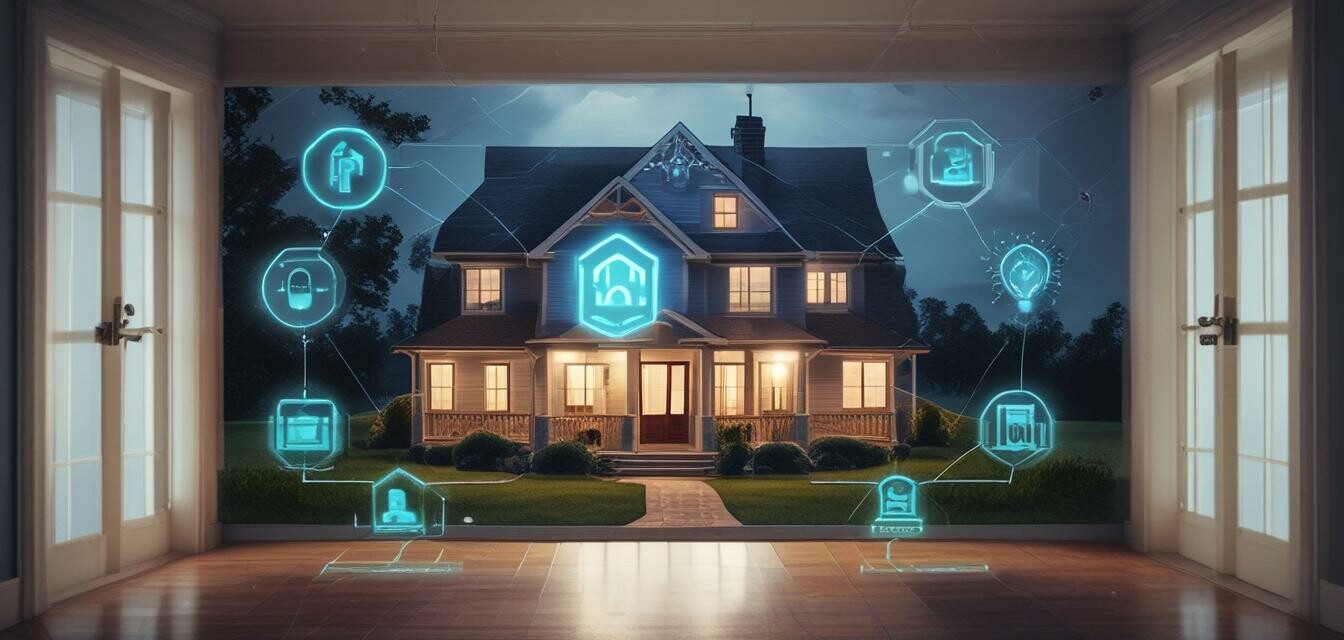
Smart Home Security
Cybersecurity Risks in Smart Home Systems
The rise of smart home technology has transformed the way we secure our homes. While these systems offer convenience and enhanced control, they also introduce new cybersecurity risks that homeowners must understand and mitigate. In this article, we explore the potential threats that accompany the adoption of smart home security systems and provide actionable steps to protect your home from cybercriminals.
Key Takeaways
- The increasing number of connected devices enhances convenience but raises security concerns.
- Common cybersecurity risks include unauthorized access, data breaches, and malware attacks.
- Homeowners can take specific measures to secure their smart devices and networks.
- Staying informed about security updates and best practices is crucial for safeguarding your home.
- Regularly assessing the security of devices can prevent potential vulnerabilities.
Understanding cybersecurity risks
Smart home systems rely on internet connectivity, making them vulnerable to various cybersecurity threats. Below are some of the primary risks associated with these systems:
| Cybersecurity Risk | Description |
|---|---|
| Unauthorized access | Cybercriminals may gain access to your smart home devices via weak passwords or unsecured networks, allowing them to control your devices remotely. |
| Data breaches | Smart devices can collect personal information, and if these devices are hacked, sensitive data can be leaked or sold on the dark web. |
| Malware attacks | Malicious software can infect smart devices, leading to disruptions in service, data theft, or even taking full control of the home network. |
| Device vulnerabilities | Manufacturers may not always provide timely updates, leaving devices susceptible to known exploits that hackers can take advantage of. |
Common vulnerabilities in smart home systems
Beyond understanding the risks, it's crucial to recognize the common vulnerabilities that can be exploited by attackers. Below is a list of typical vulnerabilities found in smart home devices:
- Weak default passwords that haven't been changed.
- Lack of firmware updates and patches.
- Insecure network configurations.
- Inadequate encryption protocols for data transmission.
- Physical access to devices that can lead to tampering.
Best practices for securing smart home systems
To protect your home from cybersecurity threats associated with smart home systems, consider implementing the following best practices:
- Change default passwords: Update all factory-set passwords and use strong, unique passwords for each device.
- Regularly update software: Enable automatic updates for your devices, or manually check for updates to ensure you're protected against known vulnerabilities.
- Use a secure network: Ensure your Wi-Fi network is secured with a strong password, use WPA3 encryption, and consider creating a separate network for your smart devices.
- Implement two-factor authentication: Whenever available, enable two-factor authentication for added security on your accounts.
- Review user permissions: Regularly check which devices are connected and remove any that are no longer in use.
Stay informed about cybersecurity trends
As technology continues to evolve, so do the threats. Homeowners should stay informed about the latest trends in cybersecurity related to smart home systems. Consider visiting our news and trends section to keep updated.
Conclusion
Smart home security systems offer numerous benefits, but they come with inherent cybersecurity risks. By understanding these risks and implementing best practices, homeowners can significantly enhance the security of their smart home ecosystems. Continuous learning and adapting to new threats will ensure that your home remains a safe haven in an increasingly connected world.
Pros
- Enhanced convenience in home management.
- Ability to monitor and control security remotely.
- Increased integration of smart technologies.
Cons
- Cybersecurity threats that may compromise personal data.
- Potential for system malfunctions due to security vulnerabilities.
- Dependence on internet connectivity for functionality.
Beginner's tips for protecting your smart home
- Start simple: Secure your Wi-Fi network first before connecting devices.
- Read device manuals carefully to understand security features.
- Seek online resources and communities for ongoing advice and support.
- Consider professional security assessments for advanced setups.